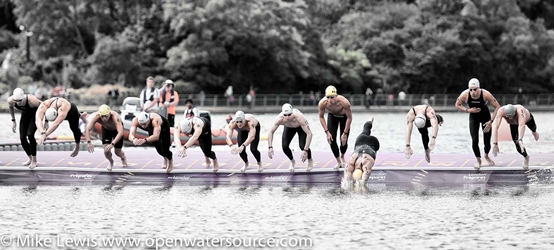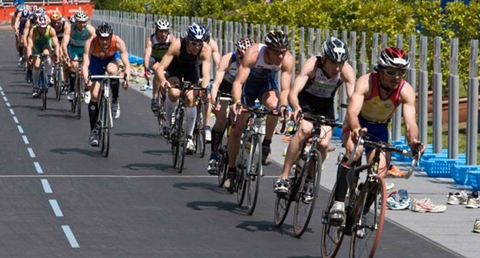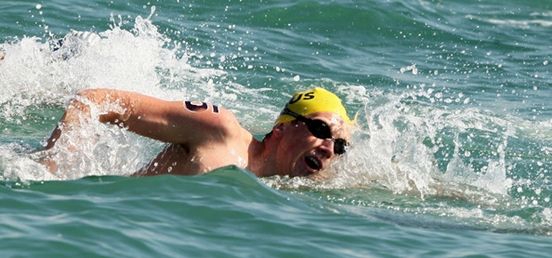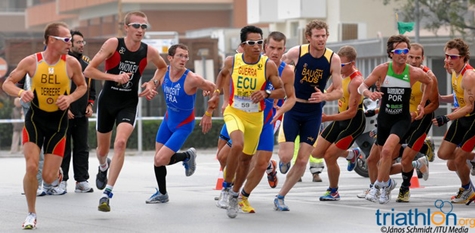Tips to Maintain Healthy Joints
A joint is the connection between two bones. Smooth tissue called cartilage and synovium and a lubricant called synovial fluid cushion the joints so bones do not rub together. Pain happens when joints become damaged or worn.
Knee pain. Shoulder pain. Wrist pain. Elbow pain. Ankle pain. Neck pain. Hip Pain. A pain in the %#&!
For athletes, joint pain can interfere with training, race day performance and the ability to compete and enjoy it. Maintaining joint health is not only important for short term training and racing objectives, but also significant for long term health and longevity. It's not good to experience long term joint pain and diminished joint function resulting from deterioration of joints due to poor training planning.
Here are some tips to help you maintain healthy joints now and for the long term joint function:
1. Don't Overtrain. Overtraining occurs when the volume and intensity of an individual's exercise exceeds their recovery capacity. Overtraining can be tough on your joints. As you know, you will likely feel some muscle pain after working out. But any soreness that lasts longer than 48 hours can be a warning overtraining warning sign. Such pain could mean you've overstressed your joints, and working through it may lead to injury or damage. Overtraining is increasing your volume or intensity by more than 10% in a week.
2. Foods to Nourish Joints. Eat foods high in Calcium, Vitamin D, Vitamin C and Omega-3 Fatty Acids. For a list of foods rich in Calcium and for a list of foods that impair bone and muscle growth See Natural Food Sources of Calcium. Vitamin D plays a key role in the absorption of calcium for the maintenance of health bones and promotes muscle development and muscle strength. The sun is the best source of Vitamin D. See Vitamin D Synthesis and Natural Food Sources of Vitamin D.Vitamin C is required for the biosythesis of Collagen, a group of naturally occurring proteins which make up about 25% to 35% of our whole-body protein content. Collagen is a key ingredient of our tendons, ligaments and skin, and is also abundant in our cartilage and bones. See Natural Food Sources of Vitamin C. Omega-3 Fatty Acids promote healthy joints and reduce joint pain and swelling. Salmon and Mackerel are good sources of omega-3s. See Natural Food Sources of Omega-3 Fatty Acids. In general, eating natural organic foods are more nutritious than processed foods or foods containing toxins. See Organic Foods for Improved Health.
3. Posture and Technique. Standing and sitting up straight protects your joints from your neck to your knees. Good posture also helps guard your hip joints and back muscles. Posture is also important when lifting and carrying. For example, if you use a backpack, be sure to put it over both shoulders instead of slinging it over one. Being lopsided puts more stress on your joints.
If your experience joint pain, it's a good time to evaluate your technique. Having proper running technique will significantly prevent joint wear. See Ideal Running Technique Tips and Video. The same can be said of pedaling technique. See Cycling Pedaling Technique. For injury prevention and performance, purchase a bike size with a frame that fits you well. It's been said, swimming is 70% technique. Good swimming technique not only will enhance speed, but will help prevent injury. See Smooth Freestyle Swimming Technique
4. Aerobic Cross-Training. Aerobic cross-training like cycling and swimming can help you recover from injuries or prevent injuries in the first place. For runners, for instance, cycling is a great cross training sport as cycling strengthens the muscles that support the knee. This knee supporting muscle strengthening takes some pressure off the joints while running. Athletes who want to keep their aerobic fitness while recovering from injuries can continue to exercise using cross-training.
5. One Injury can Lead to Another. Depending on the injury, the body tends to overcompensate for an injury placing stress on noninjured joints and muscles that can lead to skeletal imbalance, joint injury and other muscle injuries. When injury occurs, it's prudent to let the injury heal before aggressively beginning your workouts. When injury occurs, icing the injury helps prevent inflammation. See How to Treat Running Injuries with Ice
6. Targeted Weight Training. Strong muscles support your joints. Your joints can take a pounding, especially your knees, which must support your entire body weight. Target your weight training to strengthen muscles that support the joints used in your sport.
7. Optimum Weight. Keeping your weight within a healthy range is the best thing you can do for your joints. Research has shown that with every pound gained, a person puts four times more stress on the knees. See Food Portion Control. Maintaining a healthy weight also impacts your resting pulse rate, a key indicator of health. Excess weight tends to increase your resting pulse rate adding long term stress to your heart. See Resting Heart Rate - Key Measure of Health
8. Keep Joints Warm. Keeping joints warm will protect them from injury. Muscles and joints don't work well when they are cold. Whether swimming in cold water or running and cycling in cold, wet and windy conditions, it's important to wear clothing protective of the joints. There's a wide selection of cold protecting gear available for all three sports. Keeping the joints warm is important at all times, not only when training.
9. Flexibility. Flexibility allows muscles and joints to move through their full range of motion. It is joint specific. This means that a person may have excellent range of motion in one joint and be limited in another. Poor flexibility of the back and hips may lead to stiffness, poor posture, back problems, movement limitations, and a higher risk for injury to muscles, tendons, and ligaments.
10. Hydration and Electrolyte Balance. Maintaining good hydration and electrolyte balance, especially during endurance events and training will prevent fatigue driven injuries.
11. Considerations for Swimmers. Improper swimming technique can cause shoulder injuries. Common improper swim technique includes (i) reaching too far and over-rotating, (ii) crossing over in freestyle when pulling and (iii) breathing on only one side. If you breath to only one side, you will develop the muscles more on one side than the other, and this could cause a breakdown and a shoulder problem. One of the most important things in stroke technique when it comes to freestyle and avoiding shoulder injuries is to bend your elbows underwater during the pull. This is proper form and will keep you from putting your shoulder in an awkward position that leads to a rotator cuff problem.
12. Considerations for Runners. The rate of injuries in running is higher than any other sport, including contact sports such as football, basketball and soccer. Shoes with the right fit and support are important! Problems with foot overpronation and underpronation which can damage joints can be corrected with appropriate shoes and/or orthotics. Primarily running on pavement can be hard on the joints. Mix it up with some trail runs. See Trail Running Benefits. Running on the same route on a sloped road can be very stressing on knee and hip joints.
13. Awareness and Safety. Basic enough! Be mentally alert and aware of conditions while running, cycling and swimming and follow the standard safety rules. By so doing you lower the risk of avoidable injuries. Cycling injuries can be serious. See Cycling Safety Rules.
More about Ralph Teller. See Ralph's 1Vigor Log Calendar.






